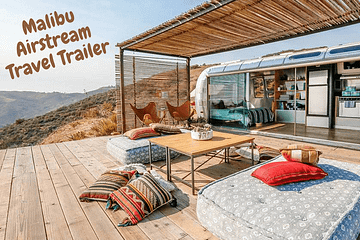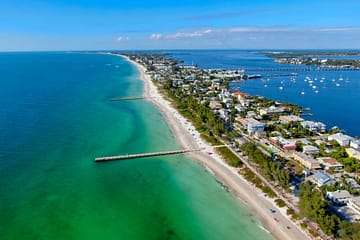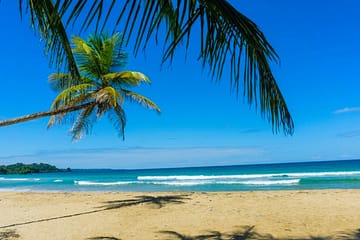Zion National Park is a national park located in the southwestern region of the United States. It is situated in Utah and covers an area of 229 square miles. The park is known for its stunning geological formations, including towering sandstone cliffs, narrow slot canyons, and scenic hiking trails. Visitors to Zion can enjoy a variety of outdoor activities, including camping, hiking, rock climbing, and wildlife watching.
The park is home to diverse plant and animal species, including bighorn sheep, black bears, and mountain lions. Planning is crucial for visitors to Zion, as the park can get crowded, particularly during peak season. The best time to visit Zion National Park for exploring activities depends on your preferences and the type of activities you plan to do.
Things to do in Zion National Park
There are many exciting things to do in Zion National Park. Here are some of the top activities to consider:
Zion National Park Hiking

Zion is known for its incredible hiking trails, ranging from easy walks to strenuous backcountry treks. Some popular hikes include Angels Landing, The Narrows, and Observation Point. Hikers do not need to hike the entire distance of the trail, and they can turn around at any point and return the way they came. It’s essential to note that the group size limit for all Zion Wilderness trails, including the Virgin River Narrows beyond the junction with Orderville Canyon, is 12 people.
Zion National Park does not require tickets, permits, or reservations to enter. Visitors are welcome to explore the park at their leisure, hike the trails, and enjoy the scenic views. If you are planning to hike on a trail in Zion National Park, it is almost certain that you will want to take your camera with you to capture the stunning views. For hiking, it is recommended that you use a small backpack that is lightweight and easy to carry. This will allow you to have your camera easily accessible for quick shots without weighing you down during your hike.
However, if you want to have a more organized and guided experience, you may want to consider booking a hiking or camping tour of Zion National Park. These tours can provide you with expert guides who know the best trails and viewpoints to see.
The best time to visit Zion National Park for hiking
Fall is also a popular time for hiking in Zion, with cooler temperatures and stunning fall foliage. Hikers can enjoy the park’s trails without the crowds and summer heat, making for a more peaceful and enjoyable experience.
Summer can be a challenging time for hiking in Zion National Park, due to the high temperatures and potential for monsoonal storms. Hikers should plan their hikes early in the day, bring plenty of water, and be prepared for sudden weather changes.
Winter hiking in Zion can be a unique and rewarding experience, but hikers should be prepared for snow and ice on the trails. The park’s higher elevations can also experience colder temperatures and snow accumulation, making certain trails inaccessible.
Zion National Park Sunset and Stargazing

Sunset and stargazing in Zion National Park are two of the most magical experiences you can have in the park. The park’s stunning red rock formations and expansive views make for a breathtaking sunset, and the clear desert skies offer incredible stargazing opportunities.
Some Great spots for Sunset and Stargazing
For stunning views of Bridge Mountain and the East Temple at sunset, head to the Museum Patio Zion National Park. The wider view of the sky makes it a great spot for stargazing as well, and there are parking and restrooms available.
Where to watch Sunrise & sunset in Zion
The Canyon Overlook Trail Point is a great option for a sunrise stroll. This easy, paved path offers beautiful views and is perfect for early morning views.
If you’re camping in the park, South and Watchman Trail Zion sunset offers great views of both the sunset and the night sky.
For a different perspective, head to the Kolob Canyon Sunset Viewpoint on the west side of the park. The majestic red cliffs of Kolob shine even brighter at sunset, and the viewpoint is a great spot for stargazing. To find the darkest skies, look eastward toward the cliffs.
Zion National Park River trips

River trips in Zion National Park offer a range of exciting activities for visitors. One popular option is kayaking on the park’s various lakes, including the tranquil waters of Kolob Reservoir and the scenic Sand Hollow Reservoir. Kayaking the Virgin River Narrows is also a popular choice, offering visitors a unique way to experience the park’s stunning canyon walls.
For those seeking a more leisurely water experience, tubing on the Virgin River is a relaxing way to take in the scenery. Visitors can rent tubes and float down the river, taking in the picturesque landscapes of the park at a slower pace.
For adventure-seekers, white water rafting in Zion National Park is a must-do experience. The park offers guided rafting trips on the Virgin River, ranging from calm floats to Class III rapids. Visitors can also try their hand at cliff jumping in the park’s swimming holes, providing a thrilling adrenaline rush.
It’s important to note that river trips in Zion National Park require permits, and visitors should plan to ensure they secure the necessary permits and make the most of their time in the park.
Zion National Park – The Narrows

The Narrows is one of the most iconic and popular hikes in Zion National Park, known for its stunning views and unique experience of hiking through a narrow slot canyon.
The hike begins at the Temple of Sinawava, where hikers wade into the Virgin River and begin their journey upstream. The hike can range from a few hours to a full day, depending on how far hikers wish to venture into the canyon.
The narrowest sections of the canyon can reach up to 20 feet wide and 1,000 feet tall, creating a breathtaking environment for hikers. The water can be waist-deep or higher in some sections, and hikers should be prepared for slippery rocks and potentially cold water temperatures.
Permits are required for hiking The Narrows, and hikers should check the weather forecast and flash flood potential before embarking on the hike. Flash floods can occur suddenly in the canyon, and hikers should be prepared to exit the canyon quickly if necessary.
The best time to visit Zion narrows
Summer is an ideal season to visit The Narrows in Zion National Park. The warmer air and water temperatures make it more comfortable to wade through the river, and the longer daylight hours give visitors more time to explore the canyon.
Additionally, during the summer season, the park offers extended shuttle service, with shuttles running until around 9 p.m. This provides visitors with plenty of time to complete the top-down hike in one day and take advantage of the longer daylight hours.
Zion National Park Canyoneering

Canyoneering is a popular activity in Zion National Park, offering visitors the opportunity to explore the park’s unique slot canyons and rock formations in a more immersive way. Canyoneering involves rappelling, hiking, and scrambling through narrow canyons and pools of water.
Zion National Park is one of the best places in the country to experience this thrilling adventure.
To participate in technical canyoneering in the park, visitors are required to obtain a Wilderness Permit. There are many different canyons to explore in the park, ranging from narrow, challenging routes to beginner-friendly canyons with shorter rappels.
Zion National Park offers canyoneering experiences for all skill levels, from novice to advanced.
Visitors should be prepared with appropriate gear and equipment, including helmets, harnesses, ropes, and rappelling devices. They should also have a good understanding of canyoneering techniques and safety protocols, and consider hiring a guide if they are new to the activity or unfamiliar with the area.
Best Canyoneering in Zion
Some of the more popular canyons include The Subway, Pine Creek Canyon, Mystery Canyon and Keyhole Canyon.
Zion National Park Camping

Zion National Park provides diverse camping options for visitors, ranging from more primitive backcountry sites to developed campgrounds equipped with amenities such as running water, toilets, and electrical hookups.
The three main developed campgrounds in the park are South Campground, Watchman Campground Zion, and Lava Point Campground. South and Watchman campgrounds are open throughout the year, providing year-round camping opportunities, while Lava Point Campground is exclusively available during the summer months.
For a comfortable camping experience, visitors may consider bringing essential items such as a tent, sleeping bag, camping stove, portable power station, flashlight, water bottles, camping cots and weather-appropriate clothing. Following park regulations ensures a safe and enjoyable camping adventure amidst the stunning landscapes of Zion National Park.
Do I need a reservation to camp in Zion?
It’s a good idea to book a spot for camping in Zion National Park because they can get full fast, especially in busy times. You can reserve a spot up to six months ahead on the park’s website or by calling. If you want to camp in the wilder areas, you need a permit, which you should get before.
But remember, there are rules to follow in the park, like no campfires in certain areas and storing food properly to avoid meeting wild animals. Knowing and following these rules keeps everyone and everything safe.
Zion National Park Kolob Canyons

Zion National Park’s Kolob Canyons district is a stunning area located in the northwest corner of the park, about 40 miles north of the main Zion Canyon. This region features dramatic red rock formations, towering cliffs, and unique hiking opportunities that offer visitors a chance to explore a different side of the park.
The Kolob Canyons area is home to several popular hiking trails, including the Timber Creek Overlook Trail, Taylor Creek Trail, and Kolob Arch Trail. These trails offer visitors a chance to explore the beautiful scenery of the region, from the lush forests and meadows to the towering sandstone cliffs and canyons.
The best time to visit Zion Kolob Canyons
The best time to visit Kolob Canyons in Zion National Park is usually from March to November. This is when the weather is nicer, and the trails are easier to walk on. It’s a great time for visitors to check out the canyons, enjoy the beautiful views, and explore the area.
Zion National Park Climbing

Zion National Park is famous worldwide for rock climbing, offering some of the most amazing and tough routes in the United States. People from all over the globe come to Zion to challenge themselves on the steep sandstone walls and narrow canyons in the park.
The climbing options in Zion range from easier to very difficult routes. Some of the favourites among climbers are Moonlight Buttress, Prodigal Son, and Touchstone Wall. For those looking for an even bigger challenge, there’s big wall climbing, where climbers tackle routes that take several days to finish.
If you’re new to climbing or want guidance from a pro, there are guided rock climbing trips available in Zion. These trips provide climbers with all the necessary equipment, instructions, and support to safely and successfully climb some of the park’s most famous routes.
Abraham Peak is a majestic rock formation in Zion National Park, situated in Washington County, Utah, United States. Standing tall at a height of 2,000 feet (610 meters), it holds the distinction of being the tallest among the three peaks forming the Three Patriarchs.
The best time to visit Zion National Park to avoid crowds
Zion National Park can be quite crowded during peak season, which generally runs from April through October. To avoid the crowds, the best time to go to Zion National Park is during the winter months, from November through March. During this time, the park is much quieter, with fewer visitors and more opportunities for solitude and peaceful exploration.
However, it’s important to note that some areas of the park may be closed or inaccessible during the winter months due to snow or ice. Visitors should check the park website or contact the National Park Service for updates on conditions and closures before planning their trip.
Another option for avoiding crowds is to visit during the shoulder seasons of spring and fall when the weather is still pleasant, but the crowds are thinner than during peak summer months. Weekdays are generally less crowded than weekends, and arriving early in the morning or later in the afternoon can also help visitors avoid the busiest times of the day.




